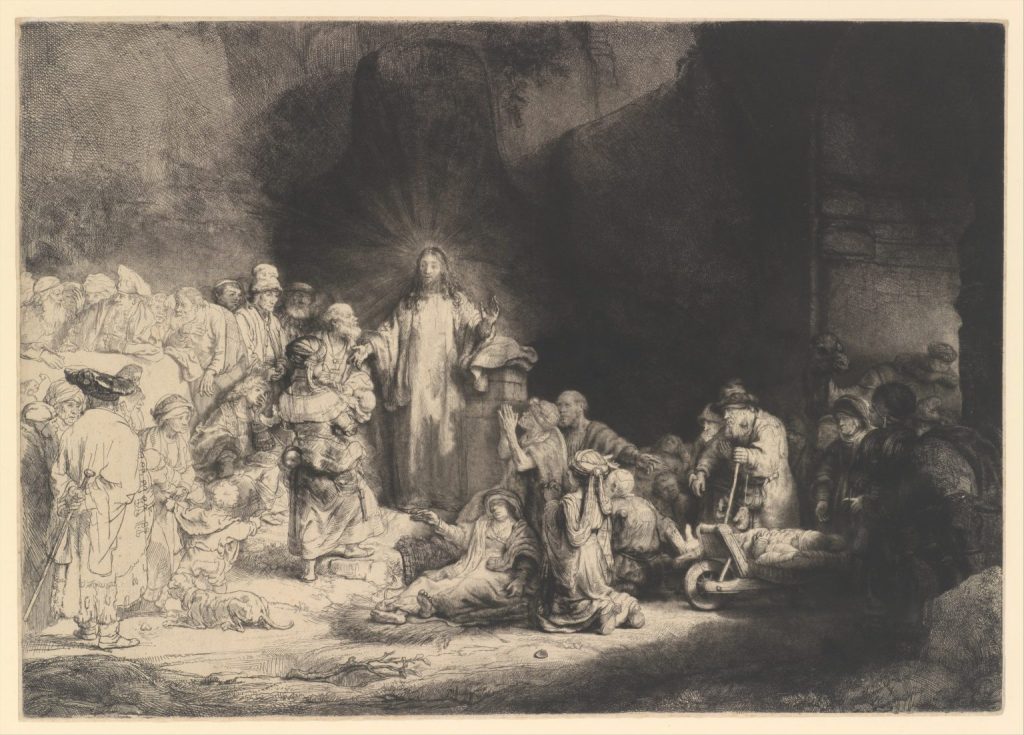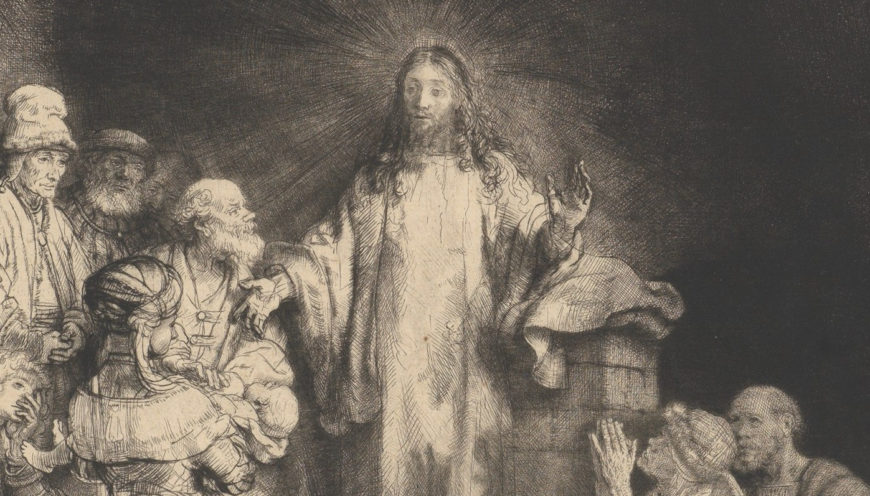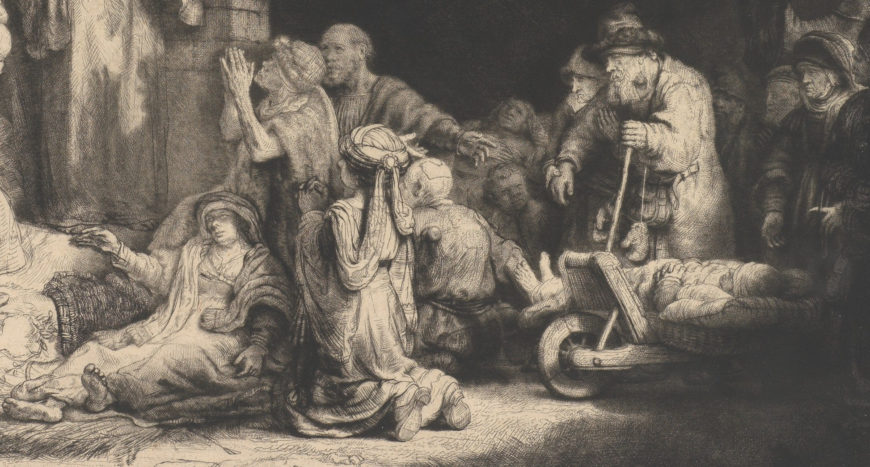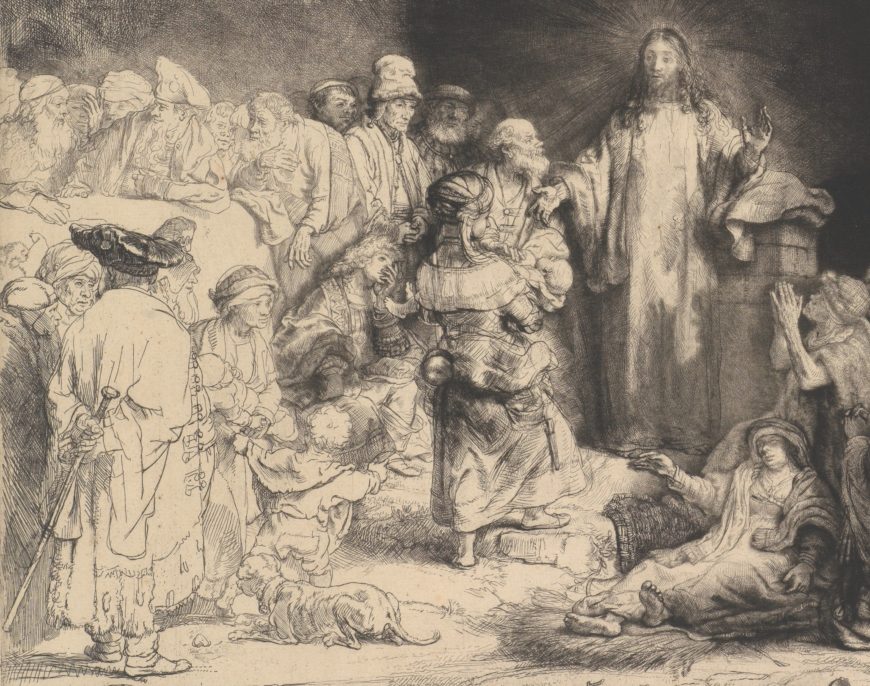Rembrandt, Christ Preaching (Hundred Guilder Print)

It cost how much?!
One of Rembrandt’s most technically ambitious prints has been primarily known more for its price tag than for its subject: The Hundred Guilder Print. A guilder was a unit of currency, and 100 guilders was an enormous amount of money to pay for a print. Most prints were under one guilder, with only very fancy and desirable images getting into double digits. As soon as the print was made, it shot into the stratosphere of value with Rembrandt himself insisting on his own high value.
The subject and composition
The Hundred Guilder Print represents a series of moments in the life and ministry of Jesus, drawn from the Bible. Jesus stands just to the left of the center with his right hand gesturing slightly downwards and his left held up as if in a gesture of blessing. He stands out against the inky darkness behind him due to the modulation of light and dark. Rembrandt’s handling of the plate here creates the sense that Jesus is emanating a holy light. Even his hands are outlined so that they stand out against the background.

Jesus angles his head to face the woman with the infant while his torso and other arm gesture to the masses in search of healing and instruction. He is surrounded by a throng of figures. Those in closer proximity and off to our right are observed in great detail: figures in complicated headgear, a sick woman at Jesus’s feet, figures kneeling in supplication or being brought in on wheelbarrows fill the right half.

Rather than depicting one specific moment from the Bible, Rembrandt created a composite of several different vignettes. Scholars tend to agree that Rembrandt depicted many different verses from chapter 19 in the Book of Matthew. These include Jesus healing the sick, disagreeing with the Pharisees, telling a rich man to sell his possessions to achieve salvation, and admonishing his disciples to “suffer the children” to come to him. Unlike the most common scenes in art of the life of Jesus, this is not about his birth or death, but about his ministry as teacher and healer. The figure with whom Jesus most directly engages is a mother carrying a baby, presumably a child she is presenting for his care. Selecting multiple verses from the Bible to be simultaneously represented both underscores the richness of Christian ministry while also contrasting the disciples and the doubters.

The divide between the faithful and the skeptical is underscored by the visual choices made by the artist. In contrast to the darker, carefully worked right half of the print containing the faithful and their supplication, the left third of the print is occupied by a group of more sketchily worked figures, including the Pharisees with whom Jesus argues, a man with a staff and fancy hat who anchors the left foreground, and a young well-dressed man with his face in his hands—perhaps the rich man who will be unable to enter the kingdom of heaven because of his earthly goods. Notice how carefully Rembrandt depicted the fancy hat to help balance out the visual weight of the right half of the print.[1]
- Dr. Saskia Beranek, "Rembrandt, Christ Preaching (Hundred Guilder Print)," in Smarthistory, April 26, 2022, https://smarthistory.org/rembrandt-christ-preaching-hundred-guilder-print/ ↵

